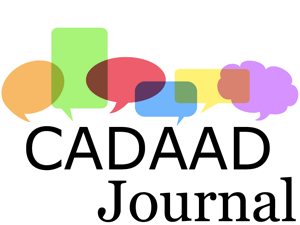These guidelines are designed to help potential reviewers when writing their book reviews. If you have any additional questions, please do not hesitate to contact the book review editors, Dr Dimitris Serafis and Dr Stavros Assimakopoulos, at serafisdimitris@gmail.com and stavros.assimakopoulos@um.edu.mt.
Length and Format
-
- Deadlines will be agreed in advance on an individual basis, and will range from 3- 6 months. Please do contact us if you anticipate any delays.
- We ask for reviews to be between 1000-1200 words in length, although there is some flexibility here if required.
- Please send completed reviews in a Microsoft Word document, along with a short biography, on or before your deadline to cadaadreviews@gmail.com.
- Minor edits may be made by the editors for stylistic purposes, but we will agree these with you before publication.
Style
In terms of style and referencing, please look at the general guidelines for articles.
The point of the book review is to provide the reader with an insight into a new area and a sense of whether they would want to go on and read this book.
Review Heading, References and Contact Information
You should include the following information in your review heading:
-
- Book Title [following house style guidelines, e.g. Surname, N. (year) Title. Place: Publisher]; number of pages; ISBN; Price [(pbk) (hbk) (e-book)].
- Reviewed by: (name and affiliation of reviewer and e-mail)
If, in your review, you refer to other studies and/or authors (in addition to the one that is being reviewed), please also include a list of references by respecting the same guidelines as for articles.
Tips
You may wish to consider, as appropriate, the following questions in your review:
-
- Who is this book written for and who might find it of interest? You might address different levels of readers (e.g. suitability for students?) in addition to those from different disciplines and sub-disciplines.
- What is the aim or focus of this book?
- What does this book tell us which is new? How does it advance the existing field?
- What kind of approach does this book take to the topic/the data?
- What are the strengths of the book?
- Are there any weaknesses? (Of course, do remember to be fair and constructive in your comments!)
Please avoid chapter-by-chapter narratives and descriptive summaries of the content. Readers can often find that information for themselves without reading your review (and we will provide a link from your review to the book page so they can find out this information about the content). Instead, think about which information would be engaging for CADAAD readers.
